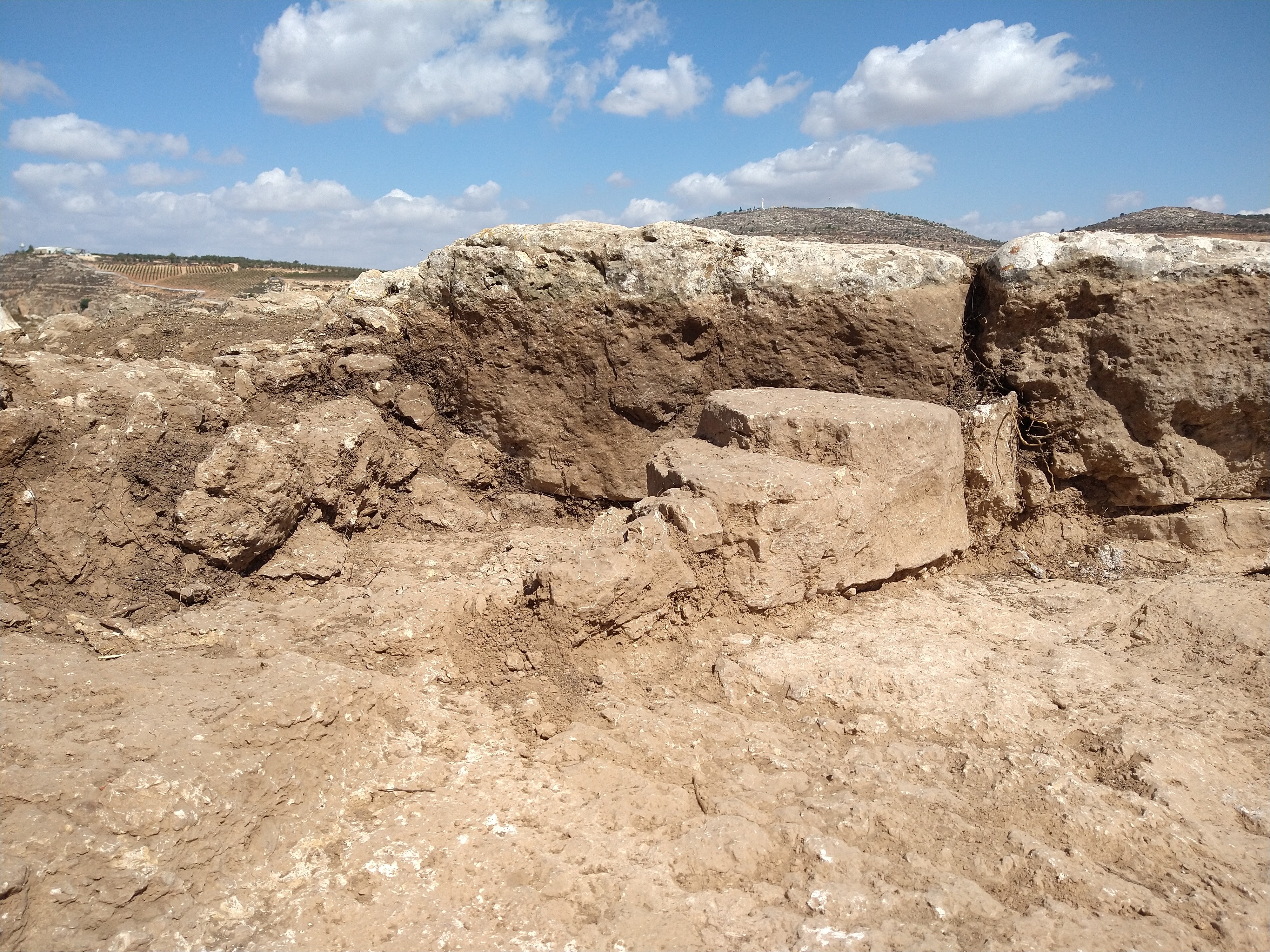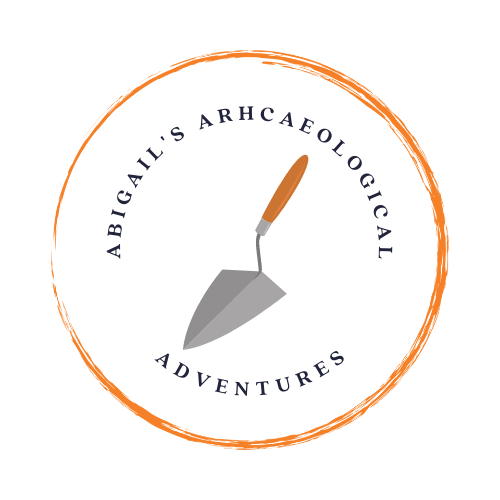This was my second week at Khirbet er-Rafid. I continued working in and co-supervising Area C.

Four people made up the core team in Area C. I co-supervised the areawith an archaeology student from Ariel University. Another Ariel U. archaeology student worked with us, and an International student from Bar Ilan University completed the team. Most days, we had other people working with us as well. Sometimes local people came to volunteer. Other times, groups of high school students came.
Communication was a bit of a challenge, but we made it work. I am only fluent in English. My co-supervisor spoke Hebrew and English. The other Ariel U. student spoke Hebrew and Spanish. The Bar-Ilan student spoke Spanish and English. Conversation flowed in all three languages, sometimes all at once. Most of our day volunteers spoke only Hebrew. The high school boys who came and worked with us seemed to have selective English comprehension. When I told them to take a break, they understood me. When I told them to get back to work, they had no clue what I was saying.
Before the excavation began, the remains of a large wall was already visible, which was why Aharon, the dig director, chose to excavate in Area C. However, it quickly became apparent that bedrock was close to the surface and that there was a large installation carved into the bedrock. As we excavated, we discovered that the installation was square-shaped and flat-bottomed.

Up until the last few days, we were unsure about exactly what we were excavating. We knew that whatever it was, it dated to the Late Hellenistic period because all the pottery dated to that period. The confusing thing was that the wall made us think that it was a tower, while the installation made us think that it was a wine press.
Numerous visitors came to the site, many of them archaeologists. They all had an opinion to share. Some looked at the wall and said that it must be a tower. They explained the installation by saying that the builders of the tower had carved out a flat floor for their tower. Others looked at the installation and said that it must be a winepress. They explained the wall by saying that perhaps the wine makers wanted some shelter for their winepress. Still others suggested that perhaps both views were correct. Maybe the winepress came first, and later someone built a tower in the same spot using the winepress as the floor of their tower.
We opened three new squares to try to find the edges of the installation and any more walls that might connect with the visible one. We left one-meter-wide balks of un-excavated soil between our squares. After excavating each square, we realized that what we were looking for must be directly under the balks. We removed first one, and then another, finding more edges of the installation under each one.
As one of the volunteers was clearing soil off the bedrock, he discovered a cut edge in the stone surface. He carefully traced the edge until he found a corner, and then another corner. It was clear that he had found something interesting. I told him to clean around all the edges before he started excavating inside it. On one side, he found a channel leading from the larger square installation into this smaller one. This was the last clue that we needed to know that we were definitely excavating a winepress.

At this point, Aharon called in an expert on ancient winepresses. In addition to studying ancient wine presses, Shivi also ran a modern vineyard in which he made wine from ancient varieties of grapes. He came and was very excited about what we had found. He told us that the vat that we had discovered was the most important part of the winepress, because it was here that we would find ancient grape seeds. He told us that the material on the bottom of the vat was the most important and that the vat should be somewhere between 1-1.5 meters deep.
He explained that the wine makers would have trampled the grapes in the larger, shallower vat. Then, they would leave it there to ferment for several days. After that, they would open the channel into the smaller, deeper vat. Here, they could store the wine on a short-term basis and from this vat they would dip up the wine into jars for long-term storage. On one side of the vat was a small, round dip in the bedrock with a little channel leading into the vat. Shivi said that he did not know for sure what its purpose was, but it was a common feature on winepresses, and some people speculated that it was for mixing in spices to make spiced wine.

We set to work excavating the vat. We worked as quickly as we could for the first 70 cm, because we knew that we were running out of time as the excavation season came to a close. The soil in the vat was hard packed and difficult to excavate. The tight space in the vat made excavating it even harder. We took turns digging to allow each person time to rest and work on something less strenuous.
When we reached the 70 cm mark, we started sifting the soil from the vat and saving it to perform flotation on it. By this time, we had finished everything else in the area and were focussed entirely on excavating the vat. Wednesday, the last excavation day ended, and we had not yet reached the bottom. Thursday was reserved for photography, pottery reading, and transporting tools and supplies back into storage. Aharon made an exception for me and allowed me to keep excavating the vat. Shivi came again and worked with me.

We decided to focus on one side of the vat so that we could dig deeper more quickly. Finally, at 1.2 meters deep, we thought that we had reached the bottom of the vat. We got really excited for a few minuted, but then we realized that it was nothing but a large flat stone. At 1.4 meters, we hit rock again. This time we were more cautious, but it turned out that this really was bedrock. But, then we discovered that what we had found was only a step, and that we needed to dig deeper yet. At 1.6 meters, we finally hit what seemed to really be the bottom. We finished excavating the first half of the vat, and knew that we would not have time to finish the job. We covered the remaining soil with felt and placed a grate over the top of the vat to prevent animals from falling in.
Afterwards, I talked to Aharon and Shivi about it. Shivi does not want to leave the remaining soil in the vat until next year, since it will fill with rainwater during the winter time, potentially destroying the grape seeds and making it much more difficult to excavate. We agreed to plan a time within the next few weeks to come back and finish excavating the vat.


10 responses to “Adventures in Area C”
Sounds like exciting, but back-breaking work. Thanks so much for sharing your adventure!
LikeLike
Hi Peggy! Yes, very exciting and very back-breaking. 🙂
LikeLike
What a great description of your excavation of a wine press! Very interesting and enlightening!
LikeLike
Thanks, Carl!
LikeLike
I loved the information but really enjoyed the humor. “When I told them to take a break, they understood me. When I told them to get back to work, they had no clue what I was saying.” I think this selective comprehension occurs in many marriages as well!
LikeLike
Thanks, Charles! You are probably right. 🙂
LikeLike
I so enjoy reading your accounts of your work. Thanks for the updates!
LikeLike
Thanks, Ann!
LikeLike
Thanks for sharing your progress–interesting!!
LikeLike
[…] After leaving E.P. 914, we had a very nice lunch in nearby Givat HarEl. Then, we paid a visit to Khirbet Rafid. I was familiar with the site, since I was part of the excavation there last year. I am looking forward to the next excavation season there! You can read about last year’s excavation at Khirbet Rafid here and here. […]
LikeLike